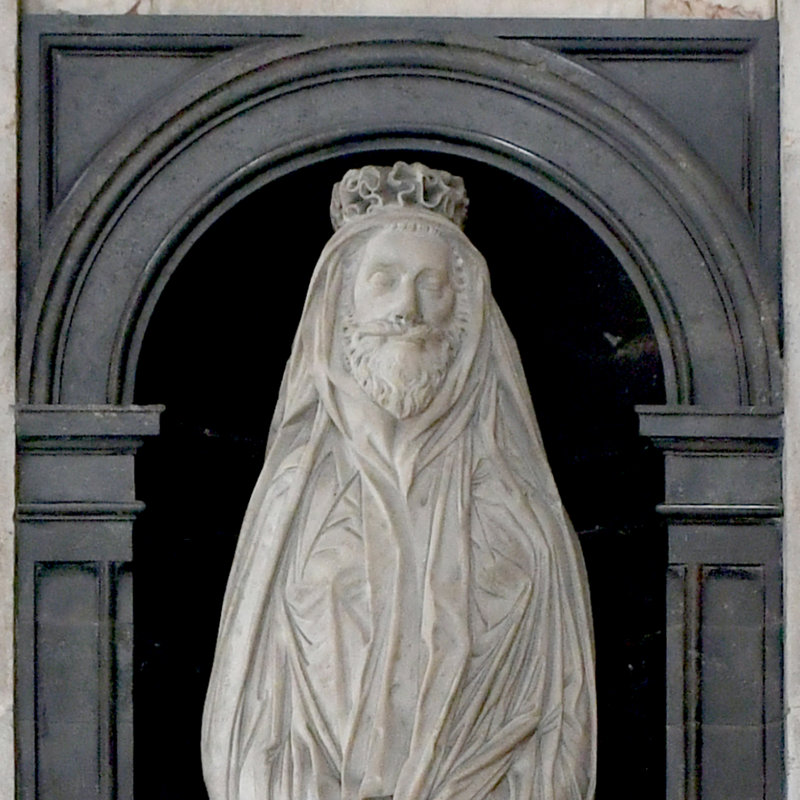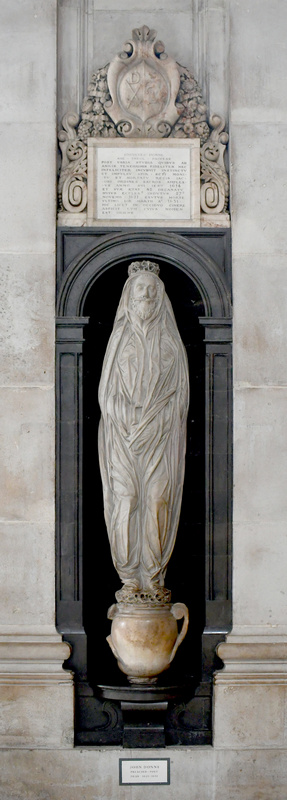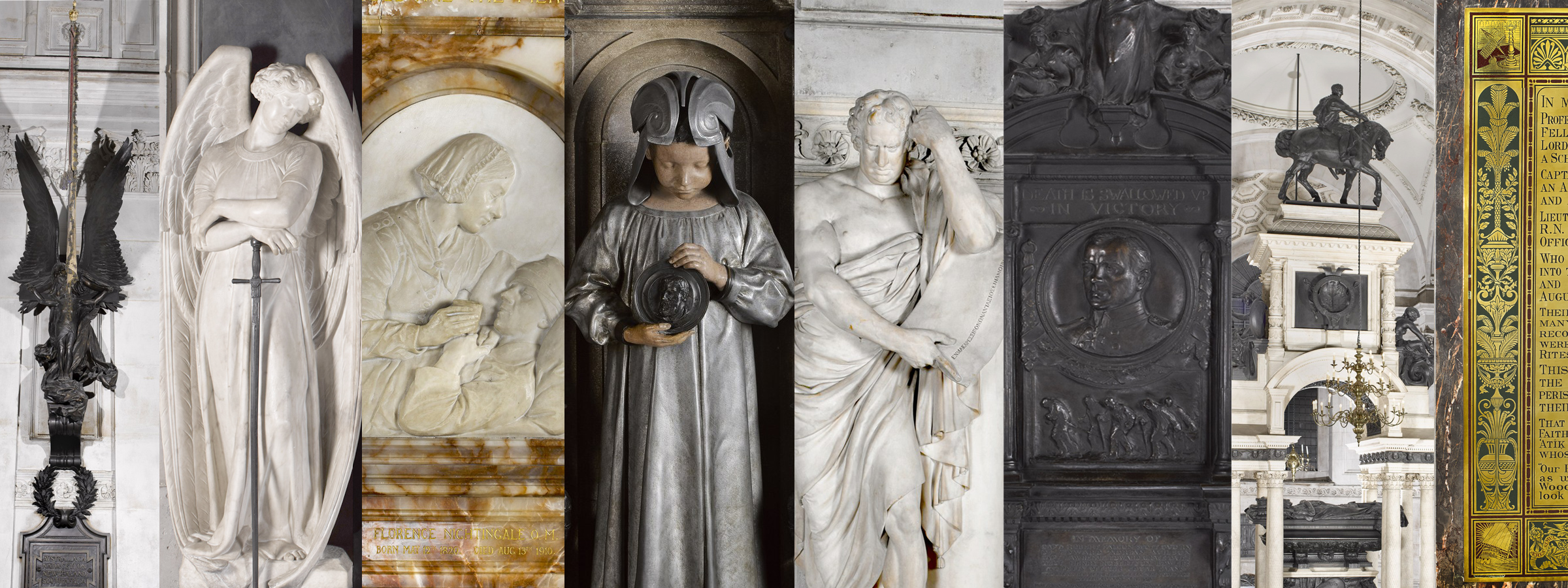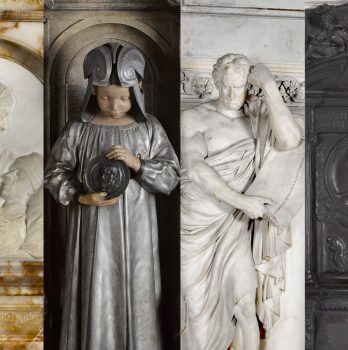A Reading of ‘A Valediction of my Name, in the Window’: Dr Amritesh Singh’s Response to the Monument to John Donne, by Nicholas Stone, 1631


Introduction
By Amritesh Singh
Donne’s poetry, marked by scouring self-awareness, offers itself as the ideal companion to his effigy. To yoke a windowpane with a monument of stone, as the reading does, is to at once evoke Donne’s own daring conceits and rebuke Johnson’s harsh judgment of them as acts of violence by bringing to light their sublime truth. Although, through their shared mortality, the observer of the effigy could be Donne himself – ‘Here you see me, and I am you’ – or one in whom, through the act of interpreting the monument (or the verse), Donne ‘understand[s], and grow[s], and see[s]’, it is ultimately the promise of – and duty towards – Life of which the effigy serves as a reminder: ‘You this entireness better may fulfil/ Who have the pattern with you still’.
‘A Valediction of my Name, in the Window’
by John Donne
I.
MY name engraved herein
Doth contribute my firmness to this glass,
Which ever since that charm hath been
As hard, as that which graved it was;
Thine eye will give it price enough, to mock
The diamonds of either rock.
II.
‘Tis much that glass should be
As all-confessing, and through-shine as I;
’Tis more that it shows thee to thee,
And clear reflects thee to thine eye.
But all such rules love’s magic can undo;
Here you see me, and I am you.
III.
As no one point, nor dash,
Which are but accessories to this name,
The showers and tempests can outwash
So shall all times find me the same;
You this entireness better may fulfill,
Who have the pattern with you still.
IV.
Or if too hard and deep
This learning be, for a scratch’d name to teach,
It as a given death’s head keep,
Lovers’ mortality to preach;
Or think this ragged bony name to be
My ruinous anatomy.
V.
Then, as all my souls be
Emparadised in you—in whom alone
I understand, and grow, and see—
The rafters of my body, bone,
Being still with you, the muscle, sinew, and vein
Which tile this house, will come again.
VI.
Till my return repair
And recompact my scatter’d body so,
As all the virtuous powers which are
Fix’d in the stars are said to flow
Into such characters as gravèd be
When these stars have supremacy.
VII.
So since this name was cut,
When love and grief their exaltation had,
No door ’gainst this name’s influence shut.
As much more loving, as more sad,
’Twill make thee; and thou shouldst, till I return,
Since I die daily, daily mourn.
VIII.
When thy inconsiderate hand
Flings open this casement, with my trembling name,
To look on one, whose wit or land
New battery to thy heart may frame,
Then think this name alive, and that thou thus
In it offend’st my Genius.
IX.
And when thy melted maid,
Corrupted by thy lover’s gold and page,
His letter at thy pillow hath laid,
Disputed it, and tamed thy rage,
And thou begin’st to thaw towards him, for this,
May my name step in, and hide his.
X.
And if this treason go
To an overt act and that thou write again,
In superscribing, this name flow
Into thy fancy from the pane;
So, in forgetting thou rememb’rest right,
And unaware to me shalt write.
XI.
But glass and lines must be
No means our firm substantial love to keep ;
Near death inflicts this lethargy,
And this I murmur in my sleep;
Inpute this idle talk, to that I go,
For dying men talk often so.


About Amritesh Singh
Dr Amritesh Singh is an academic at the University of St Andrews whose areas of expertise range across literary criticism, queer theory, international education, and Academic English & TESOL. He discovered his love for early modern poetry – a sphere in which Donne’s brilliance is unrivalled – during his undergraduate years at Hindu College, University of Delhi, where the faculty inspired him to find his voice.
Find Dr Amritesh Singh on LinkedIn.
About the Monument
The monument to the poet and preacher John Donne (1571/2 – 1631), who was Dean of St Paul’s Cathedral from 1621 to his death in 1631, was one of the very few monuments to survive the destruction of the old St Paul’s in the Great Fire of London. It was sculpted by Nicholas Stone (1586/87 – 1647), Master Mason to James I and Charles I.
Donne’s friend and biographer Izaak Walton (1593 – 1683) described how the design for the monument was made when Donne was on his deathbed:
Dr. Donne, by the persuasion of Dr. Fox [his friend and doctor], easily yielded at this very time to have a Monument made for him; but Dr. Fox undertook not to persuade how or what it should be; that was left to Dr. Donne himself.
This being resolved upon, Dr. Donne sent for a Carver to make for him in wood the figure of an Urn, giving him directions for the compass and height of it; and to bring with it a board of the height of his body. These being got, then without delay a choice Painter was to be in a readiness to draw his picture, which was taken as followeth. —— Several Charcole-fires being first made in his large Study, he brought with him into that place his winding-sheet in his hand; and, having put off all his cloaths, had this sheet put on him, and so tyed with knots at his head and feet, and his hands so placed, as dead bodies are usually fitted to be shrowded and put into the grave. Upon this Urn he thus stood with his eyes shut,and with so much of the sheet turned aside as might shew his lean, pale, and death-like face; which was purposely turned toward the East, from whence he expected the second coming of his and our Saviour. Thus he was drawn at his just height; and when the picture was fully finished, he caused it to be set by his bed-side, where it continued, and became his hourly object till his death: and, was then given to his dearest friend and Executor Dr. King, who caused him to be thus carved in one entire piece of white Marble
Izaak Walton, The Lives: Dr John Donne, Sir Henry Wotton, Mr Richard Hooker, Mr George Herbert (1670), pp. 75–76


